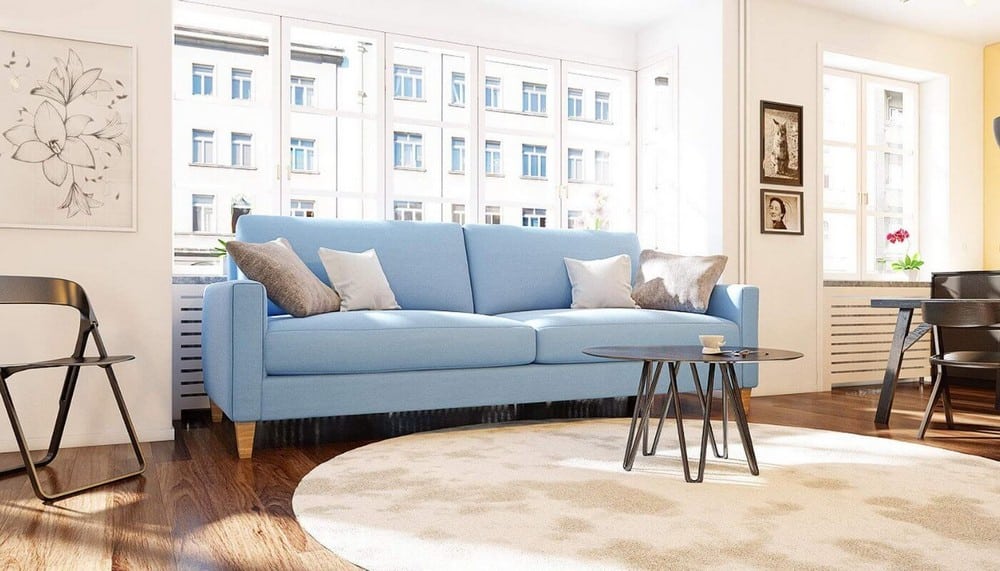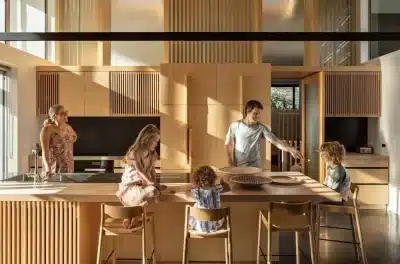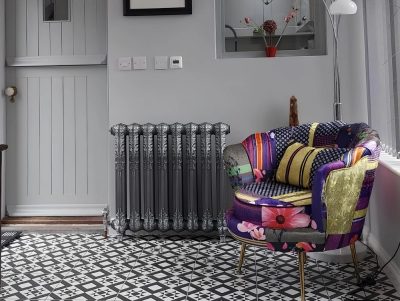
Modular furniture offers you flexibility, efficient use of space, and a customizable approach to modern living spaces. Whether you’re designing a home, office, or commercial environment, modular solutions allow you to adapt to changing needs and aesthetics.
With a wide range of styles and configurations, you can create layouts that fit both your space requirements and personal preferences. Top-rated modular furniture solutions combine quality, practicality, and clean design to support the demands of modern architecture.
The Rise of Modular Design in Contemporary Living Spaces
Growing urbanization and new work patterns are shaping the way you approach home design. Modular furniture responds to these changes by offering adaptable solutions that support different spatial and lifestyle needs.
Shifts in Lifestyle and the Demand for Flexibility
Cities are denser, and living spaces are often smaller. As you manage limited square footage, your priorities shift toward furniture that can easily move, reconfigure, or serve more than one function. Modular pieces—such as sectional sofas, expandable tables, and storage units with adjustable compartments—allow you to maximize every area of your home.
Work-from-home routines and shared living are more common. This demands furniture that you can quickly adapt for meetings, relaxation, or entertaining guests. Flexibility means you can easily reset your environment throughout the day, rather than being limited by static layouts.
You might value modular furniture because it fits evolving needs, such as growing families or frequent moves. Investing in these solutions helps reduce costs and extends furniture lifespan through reconfiguration or addition of extra elements, rather than replacing whole units.
Key Benefits in Brief:
| Feature | Benefit |
| Multi-functionality | Space and cost savings |
| Modularity | Custom-fit for any room |
| Portability | Easier rearrangement/moving |
How Architecture and Interior Design Trends Are Evolving Together
You see modular concepts reflected not only in furniture but also in the spatial planning of new buildings. Open floor plans, fewer permanent walls, and the use of sliding partitions allow you to rearrange and redefine living zones. This architectural flexibility complements modular interiors.
Color palettes and material choices in modular furniture tend to be neutral or customizable, letting you create a cohesive look as trends change without overhauling your entire space. The modular approach lets you select, swap, and upgrade sections—such as switching cabinet fronts or adding seating—tailored to your changing preferences.
Architects and interior designers collaborate more closely to create environments that anticipate your future needs. Examples include apartments with built-in modular shelving or offices designed for swift transformation into living areas. You benefit from spaces and furnishings that adapt quickly to new uses, personal tastes, and technological changes.
Key Features of High-Quality Modular Furniture
To select modular furniture that stands out in modern architecture, focus on options that provide flexible use and responsible material sourcing. The following features directly influence durability, cost-effectiveness, and environmental impact.
Adaptability and Reconfiguration
A primary advantage of modular furniture is its ability to adapt to different spaces and needs. You can reconfigure units quickly, move pieces for varying layouts, or add new modules as requirements change.
Most high-quality solutions use standardized connectors and simple locking mechanisms. This allows for seamless rearrangement without tools or extensive training. You often find modular systems used in open offices, collaborative areas, and multi-purpose homes.
Key factors to consider include:
- Interchangeable parts that maintain stability
- Multiple size and shape options for compatible layouts
- Minimal wear during repeated assembly and disassembly
Tables, wall panels, and seating can be adapted to fit evolving projects. This reduces the need for replacement furniture, lowering long-term costs and waste.
Sustainable Materials and Smart Manufacturing
Material selection impacts both performance and environmental responsibility. High-quality modular furniture often features FSC-certified woods, recycled metals, or low-emission plastics.
Smart manufacturing processes support durability and resource efficiency. Many leading brands use CNC-cut components, water-based adhesives, and powder-coat finishes to reduce harmful emissions.
A quick checklist for sustainable modular furniture:
| Feature | Benefit |
| FSC/PEFC Certification | Responsible wood sourcing |
| Recycled Content | Lower resource consumption |
| Modular Construction | Reduced construction waste |
Look for clear documentation on supply chain transparency and independent certifications. This not only assures environmental compliance but also improves indoor air quality and longevity.
Top Rated Modular Furniture Types for Modern Homes
Modular furniture is designed to adapt to your living space, offering flexibility and maximizing function. Popular options range from customizable sofas to innovative storage solutions and practical beds.
Modular Sofas: Comfort Meets Customization
Modular sofas let you reconfigure your seating easily, adapting to changes in room layout or personal needs. You can start with a basic unit and expand it with extra seats, chaises, or corner pieces.
Look for features such as removable covers, high-density foam, and built-in storage for added practicality. Many brands offer fabric and leather options in a variety of colors and textures, like DreamSofa for example.
A short comparison of common features:
| Feature | Benefit |
| Removable Covers | Easy cleaning, design changes |
| Adjustable Modules | Flexible layout possibilities |
| Integrated Storage | Optimizes space |
Sectionals and U-shaped designs work well for open-plan living areas, making them ideal in modern homes with changing family requirements.
Modular Shelving and Storage Systems
Shelving and storage systems provide configurable organization for any room, including living rooms, kitchens, and offices. You can add or remove shelves, drawers, and cabinets to fit your exact storage needs.
High-quality modular units often use materials like powder-coated steel, solid wood, or engineered composites. Many systems allow for both wall-mounted and freestanding configurations.
Some important considerations:
- Adjustable shelf heights for various item sizes.
- Options for closed and open-back units.
- Integrated desk or media components for multipurpose use.
Modular storage makes it easier to keep your living spaces organized as your needs change.
Modular Beds and Bedroom Storage Combos
Modular beds go beyond a standard frame by integrating headboards, under-bed drawers, and side tables. This optimizes bedroom space, which is often at a premium in urban homes.
You can select components such as:
- Pull-out storage drawers
- Adjustable headboards
- Stackable bedside tables and shelves
Most modular beds are compatible with different mattress sizes and can be reconfigured for guest use or when moving rooms. Sturdy frames and user-friendly assembly features are standard in highly rated models. You gain meaningful storage without sacrificing style or comfort.








